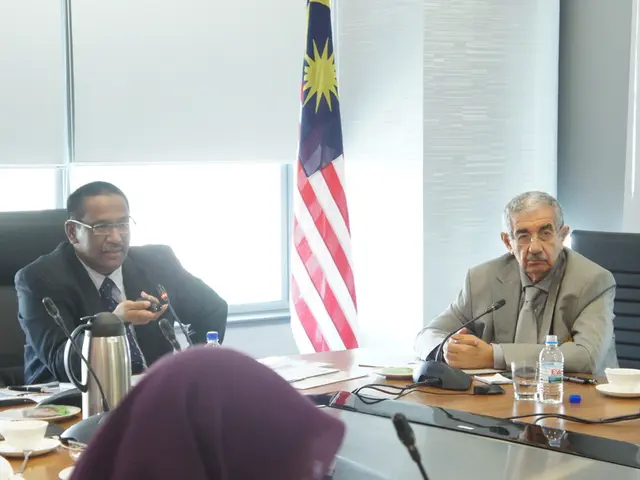Financial Empowerment via Broadened Access to Credit: A Pathway for Inclusivity in Microfinance
Microfinance, a transformative tool in global development economics, offers financial services to the unbanked and underserved, fostering opportunities for economic empowerment, particularly in developing regions. Since its inception in the 1970s with initiatives like the Grameen Bank in Bangladesh, microfinance has expanded dramatically from simple microcredit schemes to encompass a wide range of financial products and services. These offerings include loans, savings, insurance, and money transfers, all aimed at ensuring economic inclusion.
Microfinance institutions (MFIs), specialized organizations focused on serving the underbanked, extend such services. Unlike traditional banks, MFIs offer smaller loan amounts without collateral, making them accessible to low-income borrowers. Group lending, a cornerstone of microfinance, involves social collateral, fostering a sense of community and mutual support for repayment.
Aside from group lending, MFIs provide individual loans, savings programs, and micro-insurance tailored to clients' needs. Micro-saving accounts enable low-income individuals to save small amounts securely, helping manage irregular income and build capital over time. Micro-insurance safeguards clients against risks such as illness, death, or crop failure, protecting their livelihood. Technology also plays a crucial role, with digital finance solutions and mobile banking broadening MFIs' reach, particularly in remote and rural areas.
One of microfinance's most profound impacts lies in empowering women, who often face significant barriers to accessing financial resources due to cultural, social, and economic constraints. By providing women with financial services, microfinance enables their economic participation and independence, improving their financial standing, self-esteem, and social status. Empowered women are more likely to invest in their children's education and health, leading to broader socio-economic benefits for future generations
Despite its significant impacts, microfinance faces challenges, including the risk of over-indebtedness and high interest rates. To address these concerns, responsible microfinance practices and robust regulations are essential, ensuring that transparency, client education, and ethical lending remain crucial factors.
The future of microfinance is closely tied to technological advancements and innovative financial solutions. Fintech is set to revolutionize the delivery of financial services to the underserved, with blockchain, artificial intelligence, and big data enhancing transparency, efficiency, and accessibility. Integrating microfinance with other social and economic development initiatives can create more holistic and sustainable development outcomes.
In conclusion, microfinance, more than an economic tool, functions as a catalyst for social change and human dignity. By providing financial resources and support, it empowers individuals to break free from cycles of poverty and build better lives for themselves and their communities. Future success lies in responsible practices, technological innovation, and collaboration among key players to ensure that the needs and well-being of clients remain a top priority.
- The expansion of microfinance from simple microcredit schemes has led to the development of financial products and services in the realm of economics, including loans, savings, insurance, and money transfers.
- Specialized organizations, known as microfinance institutions (MFIs), offer these services to the unbanked and underserved, particularly in developing regions, with smaller loan amounts that don't require collateral.
- Group lending, a key aspect of microfinance, encourages a sense of community and mutual support, relying on social collateral for loan repayment.
- Other services provided by MFIs include micro-saving accounts for secure, small savings and micro-insurance to protect clients against various risks.
- Technology is essential in microfinance, with digital finance solutions and mobile banking broadening MFIs' reach, particularly in remote and rural areas.
- By empowering women with financial services, microfinance allows for their economic participation and independence, enhancing their financial standing, self-esteem, and social status.
- Despite concerns over over-indebtedness and high interest rates, responsible microfinance practices and robust regulations are necessary to ensure transparency, client education, and ethical lending.
- The future of microfinance lies in technological advancements and innovative financial solutions, with fintech and blockchain technologies revolutionizing the delivery of financial services to the underserved.
- Integrating microfinance with other social and economic development initiatives can lead to more holistic and sustainable development outcomes.
- In essence, microfinance functions as a tool for social change and human dignity, empowering individuals to break free from cycles of poverty and build better lives for themselves and their communities.








